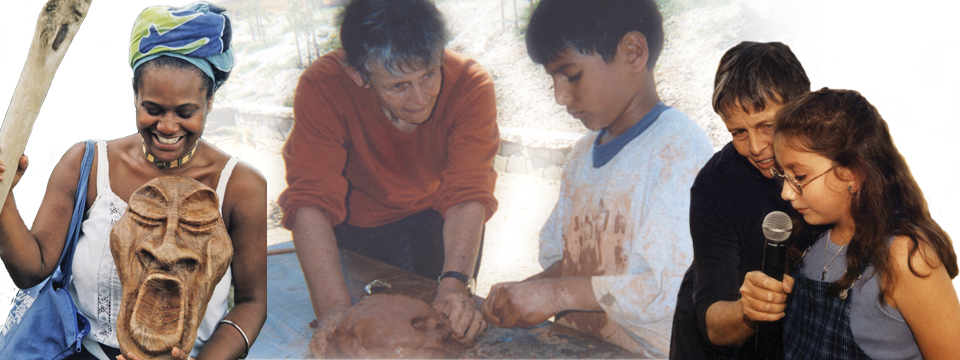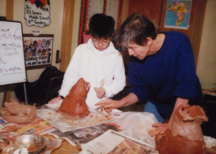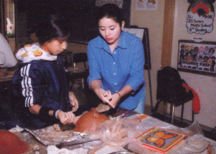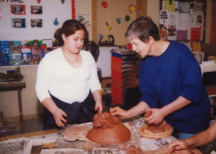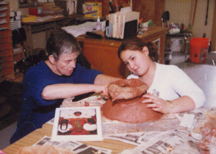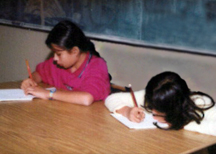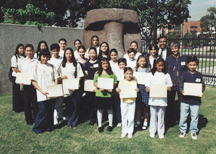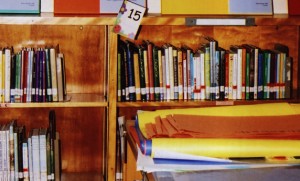“The arts are fundamental to the human spirit, the vehicle through which children view the world, experience life, create meaning and develop their minds.”
— Superintendent Richard A. Alonzo, Retired, Local District 5,
Los Angeles Unified School District
A Whole New Mind — A World of Emerging Possibilities
- Are you a parent that wants to prepare your child for the economy of the future?
- Are you a teacher that wants to incorporate the arts into Common Core Curriculum?
- Are you a School or Social Service Executive who wants empower your clients?
- Are you an Agency Director working with English Learners who want to expand their literacy skills?
- Are you a Science Educator who wants to nurture the natural curiosity of your students?
High Touch – capacities to detect patterns and opportunities –a Nuanced Approach to Learning/Education
Masks As Visual Metaphor — Metaphor as Reasoning
The Agricultural Age, Industrial Age, Information Age, Conceptual Age — Preparing students for 21century jobs and careers Creators and Empathizers –high concept-ability to create artistic and emotional beauty—put all of this in my exchanges with students-5 photos Chen 2 Jaxmin 1 and Liz 2 and Evelyn 1— detect patterns and opportunities
Forge relationships; tackle novel challenges; synthesize the big picture, craft satisfying narrative, detect seemingly unrelated ideas into a novel invention programs that are emotionally engaging; whimsical, beautiful –compelling narratives not just arguments symphony—synthesis, seeing the big picture, crossing boundaries, combine disparate pieces into an arresting new whole, empathy& to care for others and we all need play , and purpose, spiritual fulfillment—the ancients were telling stories, Masks Tell Stories, designing innovations and demonstrating empathy-for natural world
“As a contemporary art form, masks embody moments in time for their creators, blending past experiences, current events, and dreams for the future. When the mask makers are children, the images that emerge — which transcend everyday words and thoughts—are often heartfelt and sometimes quite surprising. For a child, the act of fashioning a mask can be an introduction to the creative process engaged in by fine artists everywhere.”
—Judy Leventhal The World in Me—Expressions of Urban Youth Terra Magazine, a publication of the Natural History Museum of Los Angeles County
Visual, Oral and Written Narrative Competence Begins —
Mixed Media Collage
Art and Science Connections-Neurobiological Connections Internal neurobiological connections are made inside the child’s growing brain and mind. External stimuli and working with their hands in heart felt ways interacting with a variety of textures, patterns embodied in organic forms—masks symbolic rites of passage-masks as story the adventure begins, challenges, turning points, resolution and closure Research on Human hand and brain.
Step by step students are guided into their own creative process. Trusting their own work and imagery depends on close working relationships between school administrators, classroom teachers and the teaching artist.
Visual and Oral and Written Narrative Competence begins Mixed Media Collage -Visual Narrative –Telling a Story through Mixed Media Collage (define narrative use content standard definition common core) Collage provides Context for developing skills in narrative writing. Define Narrative writing-use Common Core definition Define aesthetics and aesthetic experience and transcendence of challenges creating images that are intrinsic satisfying the right fit for the young artist.
Themes for masks as original works of art emerge and evolve gradually. Students build confidence in their own image making capacities through initial work with Mixed Media Collage.
Mixed Media Cultural Collage Compositions — Connecting with Ancestors and Family History
Children select magazine images to represent people, places and events related to their personal cultural and geographic histories; they explore a variety of art media to create a background mood and experiment with various arrangements of images that tell a visual story. Collage compositions often emerge spontaneously; the process is wordless. Every thread of initiative is supported as the artist responds to requests for colors, brushes, more magazines, oil pastels and water color crayons.
As homework, students hold conversations with parents, grandparents, or guardians, utilizing a prepared list of questions, to gather more information about their geographic ad cultural histories. Through journal keeping, students develop their skills in descriptive and narrative writing; prepare both oral and written presentations; and establish connections with the past and their immediate present.
Hands gestures of turning pages in National Geographic Magazines, selecting images that appeal to them, cutting out images with safety scissors, storing images in Ziploc bags, sorting through images noting
patterns of activities, coloring in a background that reflects students immediate mood, gestures of pressing water color crayon or oil pastel into slightly textured cold press illustration board yield unexpected and surprising results that are intrinsically satisfying with water color crayons, dry media becomes fluid, dipping a slightly stiff brush into a container of water, painting over strokes of crayon, liquefies dry media and yields unexpected and surprising impressions that reflect a sensation, mood, fleeting images from the mind’s eye.
Mixed Media Nature Collage Compositions — Connecting with the Natural World
In preparation for selecting themes for their masks, students are introduced to a variety of natural resource materials and textures of soils that represent regional marine, coastal, wetland, grassland, chaparral, forest, mountain, and desert ecosystems. They will observe, compare and contrast both familiar and unfamiliar natural resources. In related field science nature walks, they will be guided to orient themselves to city wild life and local and regional ecologies that surround their schools and homes; and collect a variety of natural objects to add to the materials presented.
Dialogues with the teaching artist stimulate children’s natural sense of curiosity and wonder and desire for creative expression through the variety of media. Working directly with textures of soil and other natural materials stimulates multi sensory experience; develops skills in artistic perception; and draw out capacities for imagination, experimentation, invention and creative expression.
Students will investigate the role of soils in a variety of ecosystems, to support the growth of plants and provide habitats for other living organisms. They will investigate the formation and composition of soils by weathering, the processes of soil erosion by wind and water, factors that contribute to accelerated soil erosion, and methods of erosion control and soil conservation. Clay is introduced as that part of the soil that hold plant nutrients, determine soil fertility, and filter contaminants to protect groundwater.
Developing Skills in Concrete Sensory Detail to Support Unified Impressions of People, Places and Events-Skills in Artistic Perception and Creative Expression work with hands, finger tips
Nature Collage Compositions include slightly textured illustration board, Yes paste, water color crayons, oil pastels, and chalks, textures of dry clay, desert and beach sands, silts, pebbles, small red rocks, dried flowers, grasses, leaves, small twigs, sea shells and seed pods.
Photo 3rd grade students assembling nature collage compositions –sifting textures of sand onto a slightly textured illustration board –quietly absorbed in playing with possibilities
3 Photos 2nd and 3rd graders nature collage compositions Summer Day Camp San Fernando Valley
Photo 3rd grade boy Nature Collage Tropical Island “There is a massive thunder storm happening. The water is pounding against the rock.”
“Stewardship of our nation’s natural resources is based on the fundamental idea of the interconnection of human beings and the environment.”
— Rachel Carson, Silent Spring
The Art and Science Connections
- Developmental Neurobiology
- Growing Connections between Right and Left Hemispheres of the Brain/modes of processing
- Disconnections and Connections between Internal and External Worlds
- Attunement and Change
- Simultaneous and Sequential Modes of Processing —Context/Text
Both scientists and artists construct models to learn how something works and to make ideas clear and tangible. Students mask models will provide artistic connections to related science concepts.
Clay is both a natural resource material and an art media. Through eye and hand, students will explore its weight, density, temperature, moisture content, texture and plasticity. As an art media clay is a flexible and forgiving material, it can be pushed, pressed, pounded and caressed.
Students create imaginative mask sculptures, as original works of art, based on organic forms, and demonstrate skill in the manipulation and use of clay, as a sculptural material. Working with clay stimulates imagination, draws out emotion, and engages hands and minds in the disciplined process of organizing cohesive and coherent three dimensional forms.
Clay will be transformed into a symbolic expression of each student’s connection with a terrestrial or sea mammal, bird, reptile, amphibian, or insect within the context of a local or regional ecology that sustains its life; or clay will be transformed into a human figurative mask related to the student’s personal cultural background.
In selecting themes for their masks, the teaching artist guides students to visualize a terrestrial or sea mammal, a reptile, amphibian, insect or bird moving through space within the habitat that supports its life. Or, students will visualize an image of a traditional mask related to their own culture or another world culture that interests them.
Immersion in Artistic Creative Process Revitalizes
Facilitating Emergent Imagery Small and large body movements -Rhythmic gestures of pinching, pressing, smoothing; whacking, slapping, stacking; twisting, bending, lifting, joining yield fresh sensory impressions, images emerge from inside
In the beginning, students will pinch, press, and smooth the clay over a round metal bowl armature. Often images for the themes of their masks emerge during this introductory process.
Students are encouraged to release emotional tensions into the clay—their sorrows, anger, hurts and fears, and construct organic symbols that embody their hopes and aspirations for their future; and the integrity of the Earth’s ecosystems. Novel ideas and images, that once seemed vague or fleeting, often, quickly emerge and find expression in improvised form.
Vigorous hand and body motions and interactions with clay stimulate kinesthetic, tactile and visual perception of three dimensional forms—thickness, length and breadth.
“The kinesthetic nature of this process has been beneficial to all my students.”
— Classroom Teacher and Early Intervention Specialist
Natural enthusiasm will be reinforced to enhance students’ processes of self exploration and problem solving and promote interaction and cooperation with peers and adults. Students will be assisted in focusing their attention on the respectful use of materials. In building their clay mask molds, students will be guided to redirect any destructive behaviors towards physical resources in the environment.
Students will demonstrate beginning skills in the manipulation and use of clay as a sculptural material; and utilize additive and subtractive processes in making their masks. They will begin to utilize the vocabulary of sculpting to describe their art making activities—pinch, press, smooth, pound, lift, stack, join.
Sculpting involves problem solving and an understanding of the unifying principles that guide the construction of three dimensional forms. Throughout the program, students focus on the element of gesture, and emphasize this unifying element of movement that infuses the mask with expressive qualities.
Students will work individually and as part of small groups, strengthening group relations skills as they construct the masks. During this journey they will write about their thoughts, emotions and experiences in an art journal format.
Starting where the student is-Attunement and the Process of Change –Harmonizing my interactions, reflections and responses to each student-meeting the students where they are developmentally, emotionally and academically
A Visual Metaphor — Mask as Visual Metaphor Aesthetic Challenges/Emotional Challenges
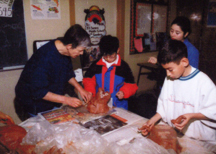
Chen, Judy Leventhal and 6th grade classroom teacher Elvira Cisneros — Modeling the Process of Inquiry through attuned and integrated communication during individualized critiques.
Chen shares positive sensations of joy in his accomplishments. Teaching artist Judy Leventhal reflects his excitement back to him and observes how quickly he has sculpted his impression of the jaws and teeth of the Komodo dragon, a reptile known for their powerful bites. Classroom teacher Elvira Cisneros observes our interactions during the critique, designed to recognize accomplishments, and initiate teacher-student back and forth collaborations to define the next steps to set up and solve problems. As critique facilitator I am continually mindful of my own feelings and bodily responses and each student’s non verbal signals indicating excitement to move forward or hesitancy, caution, wanting and needing more time and practice with small steps towards solid accomplishment –Chen’s work in progress is a visual metaphor for the powerful bite of the Komodo Dragon
our dialogues as we focus on emergent works in progress our non verbal communications includes gestures, eye contact, voice tone, –there is shared exploration—I tune into their emotions, the content of their emotions expressed in their clay masks –transforming emotions of hurt, fear, anger, sadness, grief, –moments of joy, excitement,
The three dimensional design principal of repetition and balance is new and challenging for Chen and for most students. The teaching artist utilizes hand gestures to demonstrate ways to place the eye sockets so they line up on either side of the midline of the mask mold. With string, Chen will measure the distance from the mid line of the mask for the placement of the right and left eye sockets on either side of the midline to achieve a sense of visual balance. He receives supportive feedback, guidance and encouragement to work through moments of frustration to complete this task to his satisfaction.
This process involves skills in artistic perception, mathematical reasoning-breaking up a problem into simpler parts; and includes kinesthetic, tactile and visual learning strategies.
Define Beauty-and ability to create beauty
Analysis and Synthesis both essential to human reasoning
The Details and the Big Picture –Break the whole into components-weave components into a whole
Text/Context (beyond verbal/nonverbal)—reference materials read with greater understanding-the image provides context for extending inquiry-look at milkweed butterfly, monarch butterfly, human impact on milkweed etc
Jazmin and 6th grade classroom teacher Elvira Cisneros talk over their ideas about sculpting a butterfly preparing for lift off in flight. Ms. Cisneros gestures with her hands; and models one way to solve the design principal of repetition and balance, and demonstrates how to model and join a butterfly wing to the right side of the butterfly’s thorax. Jazmin completes the butterfly wing on the left side of the butterfly’s thorax.
In response to the following journal questions- How did you work with visual balance? Jazmin writes in her journal, “One of the hardest tasks is to get the wings to be the same shape.” She adds personal narrative writing, “I like to see butterflies fly around my garden. They like flying around together. Their wings are gentle and curved.”
In her journal, Liz has written: “At the beginning of this project, I did not know what to do. I looked at the calla lilies in a Diego Rivera painting, and that inspired me.”
Liz is intent on crafting the petal of a calla lily on the crown of her mask and asks for guidance. Teaching Artist Judy Leventhal responds, reflecting back to Liz her eagerness to move forward with her project; then demonstrates some ways to add on and take away clay to rough in the overall form of a calla lily flower, on the crown of the clay mask mold. Liz wants a face of the girl in the center of the flower.
For the next hour, Liz works independently. In a critique with teaching artist, Judy Leventhal, Liz demonstrates how she improvised and used large circular hand and body motions to sculpt her impressions of the oval round petal of the calla lily on the crown of her mask. She shows how she continually referred to a two dimensional picture of a calla lily in a Diego Rivera painting. Together we look at the symmetry, how the tip of the petal lines up with the stem. Liz’s solution is inventive. She smiles as she shares her sense of accomplishment. Teaching artist Judy Leventhal acknowledges with Liz her effective use of three dimensional design principal of rhythm and movement in her work today.
Reading, Journaling and Library Research

6th grade classroom teacher Elvira Cisneros holding notes provided by the teaching artist, and writing on the blackboard, diagramming concepts in the formation of soils, and where clay is located in a vertical soil profile.
A major goal of the Mask Making Adventures program is to engage students in creative exploration of their worlds, while increasing their English Language Development and English/Language Arts Skills. In each lesson students will respond to journal keeping questions, both orally and in writing. The teaching artist prepares oral and written feedback to each student with the goal of encouraging them to further clarify and expand their thoughts orally and in writing.
Students develop systematic vocabulary concepts, interrelate listening and speaking; and reading and writing skills. Library references related to themes in their masks are read with greater comprehension. Students are responsible for preparing descriptive written and oral presentations using concrete sensory detail to support unified impressions of people, places, events and experiences. Students will pull together concepts and ideas presented throughout the program and documented in their journals, to craft a personal statement for a culminating event to celebrate their creative and academic accomplishments.
Context and Text in Journal Keeping Masks provide context for building systematic vocabulary, descriptive and narrative writing, library research, editing and crafting personal statements that include personal narrative and science information in journal keeping
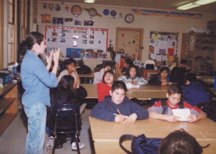
6th grade classroom teacher Elvira Cisneros instructs students to write in their journals today, following their working with clay; and prepares the class for an upcoming trip to the school library to engage in research to build and present knowledge.
California Common Core StateStandard:At the 6ththrough 8th grade levels students w ill conduct short research projects to answer a mask related research question, drawing on several sources and generating additional related, focused questions that allow for multiple avenues of exploration.
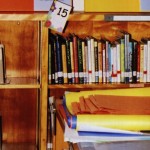 Library research will focus references describing the actual features of a land or sea mammal, bird, insect or amphibian, and the related habitat that supports its life-climate, geographic region, plant canopy, soils
Library research will focus references describing the actual features of a land or sea mammal, bird, insect or amphibian, and the related habitat that supports its life-climate, geographic region, plant canopy, soils
Journal excerpts related to library research
Jazmin copies the following from an encyclopedia,“The monarch senses direction with its antennae. It carries a built in straw, a long curled tongue called a proboscis. The adult monarch has legs with six joints, a touch water proof skin, and three body parts: head, thorax and abdomen.
“The flashy orange and black monarch belongs to the family called Milkweed butterflies, because they feed on milkweed plants.”
(Her writing can be extended to meet criteria for 6th grade Science Content Standard Ecology-Cand E) I will add more later)

Two boys preparing to write in their journals following their working with clay, with guidance from teaching artist Judy Leventhal
I will add excerpts from a boy’s journal here
Paper Mache Compositions Reflect Emotions
Emotions embodied in clay mask molding and emotions in the moment the child is sculpting with paper mache is all telling a story.
Through additive sculpture, clay mask molds will be transformed into sturdy, flexible paper mache masks, constructed with five successive layers of paper mache. Students will be helped to understand the patience and tolerance required to construct their paper mache masks over the clay molds as they apply the five layers of materials. Students will work individually and as part of small groups, strengthening group relation skills as they construct the masks.
They will adapt themselves to the expressive qualities of paper mache. As an art medium, paper mache yields to imaginative interpretations and subtle shifts in expression. Students will become aware of how their immediate moods and thoughts impact their work with paper mache.
Students will practice skills in focused attention, display team work and cooperation with peers and adults, and manage time and resources.
Paper mache masks will symbolize a students’ imaginative interconnection with a mammal, bird, reptile, amphibian, or insect within the context of a local or regional ecology that sustains its life; or an imaginative connection with a traditional mask.
Photo students removing clay from paper mache
Once the paper mache mask has thoroughly dried, the clay mask mold will be carefully removed.
Painting Compositions
Photo-Boy absorbed in painting
Students will develop skills in mixing colors and creating color combinations that reflect the colors of actual features of a mammal, bird, reptile, insect or amphibian and the qualities of the habitat that supports its life. Each student will exercise capacities for choice in selecting and arranging colors into compositions that expressively communicate moods, emotions, ideas, images and themes embodied with their completed papeir mache masks.
Journal Editing –Jud– I am working on phrasing here and this is only a rough draft
The new Common Core State Standards begin with skills in narrative writing—recounting a series of events presented in a connected sequence. Students will be able to effectively blend narrative writing skills into informational essays. In history & social studies, students will be able to incorporate narrative accounts into their analysis of significant individuals or events of historical and geographical importance. In science and technical subjects, students will be able to incorporate narrative skills to write precise enough descriptions of the step by step procedures they use in their investigations or technical work.
An Exhibition-A Ceremonial and Civic Art Event
Masks: The World in Me-Expressions of Urban Youth Natural History Museum of Los Angeles County
The Natural Resources Partnership for Youth Achievement hosts a reception and awards Event on October 22, 1999. Students lead docent tours and deliver presentations before an audience of guests from U.S. Department of Agriculture, Natural Resources Conservation Service and the Forest Service, elected and community representatives, educators and administrators from the Museum and the Los Angeles Unified School District and parents.
Photo R 5-22 (plus a small photo of the mask being described) NOTE: Don’t Have Photo
“We ended up looking at the earth and nature in new ways, in ways we had not seen before.” — Edsel, age 11

“I made a turtle. The shapes on the shell were very exciting…hexagons, squares, circles and more.” — Melissa, age 8
Photo R 5-14 (plus a small photo of mask being described) NOTE: Don’t Have Photo
“My mask is called Now Hope. The left side of my mask represents what is happening to the oceans…now. The right side of the mask represents what I hope happens in the future.” — Wendy, age 11
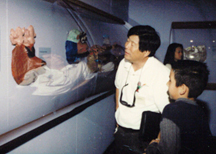
“I got great insight into how children look for ways to connect to the land…the masks draw out another level of communication, and transcend barriers of culture and language.” — Bill Otani, Wild Life Biologist, U.S. Forest Service
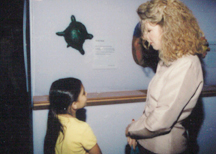
“ …children participate in a process of inquiry that crosses over into every academic discipline, especially Math Reasoning and Language Arts Development.” — Beth Bythrow, Principal, Multnomah Street Elementary School, Los Angeles Unified School District
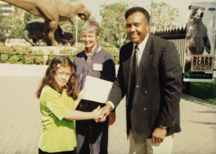
Awards Ceremony Natural History Museum of Los Angeles County. Richard Campbell, Los Angeles County District Conservationist
U.S. Department of Agriculture, Natural Resources Conservation Service, Chairman, Natural Resources Partnership for Youth Achievement presents Certificates of Achievement to each student.
Possible quotes from children and youth-taken from evaluation surveys on their Rites of Passage
“ helped me do team work” “ try hard and don’t give up” “I discovered I have patience and I learned about sculpting and painting” “ I learned about my culture” “ I learned how to share and talk in front of people” “I learned to shape clay and I learned to do research” “I Learned how to work with lots of shapes”
Parent Testimony
“I have noticed that many children are unsure of their ability; and hesitate to do their own work. Many times they will look to the teacher, an adult or another student for solutions, rather than working things out creatively for themselves. The children were enthusiastic, eager participants in this project. They finished the program with more self confidence, increased knowledge of math and science concepts, a desire to learn more about animals and art through reading and with a beautiful work of art. Ms. Leventhal works with children in such a way that the students gain self confidence and pride in their work. She is patient and nurturing, while at the same time, she insists on excellence and conscientiousness. I feel so fortunate that my child was able to participate in this program.” — Jean Thiel Kelly, Volunteer Parent-Multnomah Elementary School
Teacher Comments
“…the program begins an introspective process that is a real necessity considering the complexity of life today.”
— Elaine Peters 5th grade teacher, Multnomah Street Elementary School, LAUSD
…students were much more willing to ask questions and experiment with new ideas. Lucy Nigh 3rd grade teacher Environmental Studies Magnet, Multnomah Street Elementary School LAUSD
Fundamental Skills in Reading and Narrative Writing
Practices with basic skills in artistic perception and creative expression contribute to listening, speaking, reading, and writing in fundamental ways. Kinesthetic,tactile and visual learning strategies demonstrated in posing and solving visual/spatial problems, utilize mathematical reasoning skills.
Classroom tasks build kinesthetic, tactile and visual learning problem solving skills.
Classroom dialogues build a bridge between wordless kinesthetic, tactile and visual problem solving skills and visual concepts represented and generated by these practices are translated into verbal representations.
Each mask tells a story-journal keeping is about a moment to moment story based on interactions with art tools and materials, hands and eyes and whole body motions.

Defining and solving problems in sculpting—every thread of children’s initiative is supported to create symmetry and balance in the mask composition.
At the sixth grade level. 6th grade student Evelyn pays close attention as teaching artist Judy Leventhal demonstrates skills in refining her mask step by step.
Evelyn has sculpted a long curved beak of a wood stork, consulting related visual resource materials. Judy Leventhal demonstrates skills in 3 dimensional design step by step — placing, and joining the long curved beak of the wood stork in the center of its face, then Evelyn completes the process.
Evelyn writes in her journal: “I worked a lot on symmetry in making my mask. Once I got the idea of it, it was not as difficult as in the beginning.”
Excerpts from Evelyn’s research recorded in her journal during a trip to the school library:
“The Wood Stork is special. The Wood Stork is the only native stork in North America. It once ranged throughout the Southern States; but today is only found in Florida marshlands. Today fewer than 100,000 birds are left in the United States. In the Florida marshlands Wood Storks make their nests in cypress trees …people have been cutting down these trees where they breed and nest.
“The wood storks bite is as fast as a spring load trap.” (Citing references The Everglades: Rivers of Grass Marjorie Stoneman Douglas put publisher and date)
Evelyn’s journal note she creates a Visual Metaphor: “My mask has lots of shapes. The body is long and oval. The head is oval. The yellow and blue flames indicate that the stork is in danger. A visual metaphor, the beak is long and cone shaped. The wings are painted a wood color; the body is red.”
